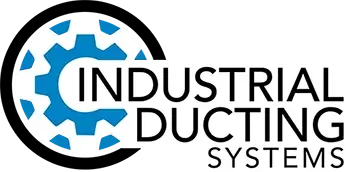Rubber Manufacturing Ducting Solutions
Rubber manufacturing facilities face complex air quality challenges due to the diverse range of processes involved in converting raw rubber materials into finished products. Operations include mixing, milling, calendering, molding, vulcanizing, and finishing processes that generate multiple types of airborne contaminants including rubber dust, accelerator chemicals, vulcanization gases, and solvent vapors.
The industry processes both natural and synthetic rubber compounds, each presenting unique emission characteristics. Natural rubber processing generates organic dusts and potential allergens, while synthetic rubber operations may involve styrene, butadiene, and other chemical emissions. Vulcanization processes create sulfur compounds and other gases that require specialized handling due to their toxicity and odor characteristics.
Modern rubber manufacturing increasingly involves automation and enclosed processes, but legacy facilities often feature open mixing and milling operations that generate significant fugitive emissions. The industry also faces challenges related to temperature extremes, with vulcanization processes operating at 300-400°F while some synthetic rubber processes require sub-ambient temperatures.
Specific Air Quality Requirements & Regulations
OSHA's Process Safety Management standard (29 CFR 1910.119) applies to facilities handling large quantities of hazardous chemicals common in rubber manufacturing. This requires comprehensive safety management systems including mechanical integrity programs for ventilation systems.
Many rubber manufacturing facilities operate under Title V air quality permits that limit total VOC emissions and require continuous monitoring. State regulations often impose additional requirements, particularly for facilities in ozone non-attainment areas.
Temperature considerations are significant in rubber manufacturing. Vulcanization operations require high-temperature rated ductwork (400-500°F), while solvent recovery systems may operate at elevated temperatures. Condensation control is critical in systems handling solvent vapors to prevent operational problems and emission control equipment damage.
Construction Process & System Design Considerations
Rubber manufacturing facilities require integrated ventilation systems that address multiple emission sources with varying characteristics. Construction must accommodate the complex three-dimensional nature of rubber processing equipment, including large mixing mills, calendering lines, and vulcanization presses.
The construction process typically involves phased installation to maintain production continuity in facilities that often operate continuously.
Ductwork design must address the sticky nature of rubber compounds that can accumulate on duct surfaces. Smooth interior surfaces and adequate access for cleaning are essential. Systems handling solvent vapors require explosion-proof construction and specialized materials resistant to chemical attack.
Capture system design is critical for rubber manufacturing applications. Mixing operations require high-velocity capture systems to overcome the thermal buoyancy of heated materials. Molding and vulcanization processes benefit from enclosed capture systems that contain emissions at the source.
Technical Specifications & Performance Requirements
Rubber manufacturing ventilation systems typically require 100,000 to 1,000,000 CFM depending on facility size and production volume. Individual process capture systems range from 2,000 CFM for small molding operations to 50,000+ CFM for large mixing mills and calendering lines.
Ductwork materials must resist chemical attack from rubber compounds and processing chemicals. Stainless steel (316L) is preferred for solvent-handling applications, while epoxy-coated steel may be suitable for lower-concentration exposures. High-temperature applications require specialized alloys or refractory linings.
Transport velocities must be sufficient to prevent material accumulation while minimizing energy consumption. Typical design velocities range from 2,000-3,000 FPM for vapor-handling systems and 3,500-4,000 FPM for particulate-handling systems.
Static pressure requirements vary significantly based on emission control equipment. Systems with thermal oxidizers may require 25-35 inches of water column, while simple filtration systems typically require 10-15 inches. Explosion prevention measures may require specialized venting and suppression systems.
How Industrial Ducting Systems Delivers Solutions
The Industrial Ducting Systems team understands the unique challenges of rubber manufacturing, from high-temperature vulcanization processes to complex chemical emission control requirements. Our comprehensive approach addresses both worker safety and environmental compliance while keeping production efficient.
Our 2D CAD design services provide detailed system layouts that integrate with your facility's complex processing equipment and production flows. We understand the critical importance of maintaining proper capture velocities while accommodating the thermal and chemical challenges of rubber processing.
Our material expertise ensures proper selection of chemically resistant components for aggressive rubber processing environments. We provide detailed quantity take-offs that account for specialized materials and high-temperature construction requirements.
Our logistics coordination addresses the unique challenges of rubber manufacturing scheduling, understanding that many facilities operate continuously and require carefully planned installation sequences. We provide installation approaches that minimize disruption to production while ensuring effective emission control performance.
Experience the Industrial Ducting Systems Advantage
Chemical-resistant design, high-temperature construction, vulcanization expertise—discover why rubber manufacturers trust us with their most demanding emission control and safety challenges. Let's design a system that exceeds your expectations.
